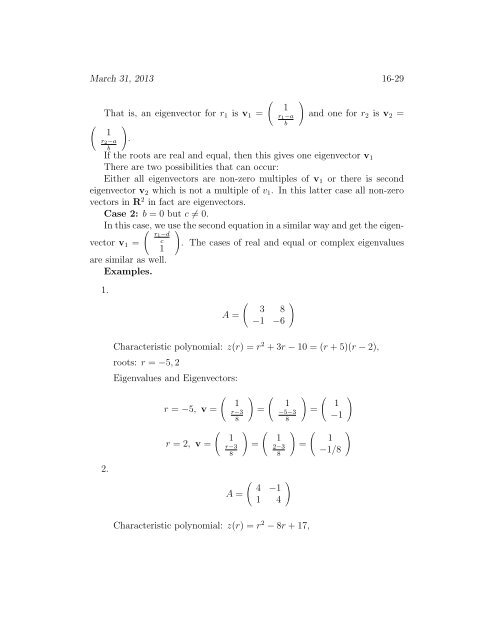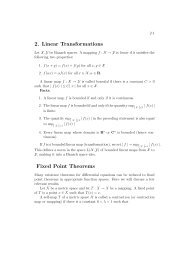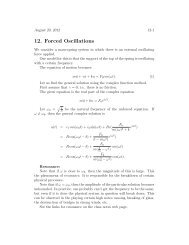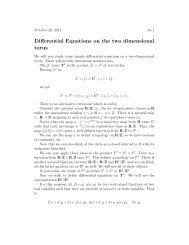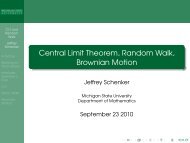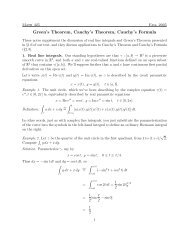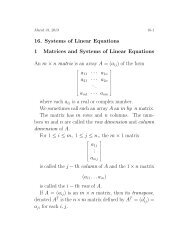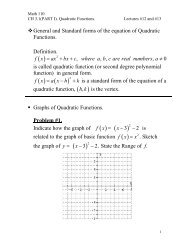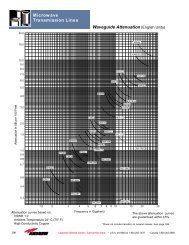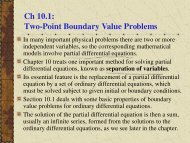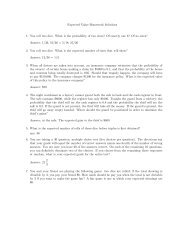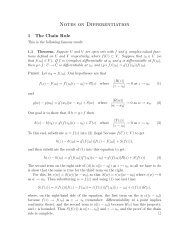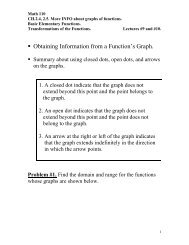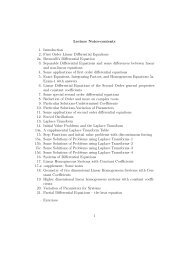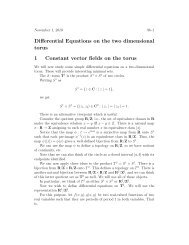16. Systems of Linear Equations 1 Matrices and Systems of Linear ...
16. Systems of Linear Equations 1 Matrices and Systems of Linear ...
16. Systems of Linear Equations 1 Matrices and Systems of Linear ...
Create successful ePaper yourself
Turn your PDF publications into a flip-book with our unique Google optimized e-Paper software.
March 31, 2013 16-29That is, an eigenvector for r 1 is v 1 =( )1r 2 −a .b(1r 1 −ab)<strong>and</strong> one for r 2 is v 2 =If the roots are real <strong>and</strong> equal, then this gives one eigenvector v 1There are two possibilities that can occur:Either all eigenvectors are non-zero multiples <strong>of</strong> v 1 or there is secondeigenvector v 2 which is not a multiple <strong>of</strong> v 1 . In this latter case all non-zerovectors in R 2 in fact are eigenvectors.Case 2: b = 0 but c ≠ 0.In this case, we use the second equation in a similar way <strong>and</strong> get the eigenvectorv 1 =(r1 −dc1are similar as well.Examples.). The cases <strong>of</strong> real <strong>and</strong> equal or complex eigenvalues1.(3 8A =−1 −6)Characteristic polynomial: z(r) = r 2 + 3r − 10 = (r + 5)(r − 2),roots: r = −5, 2Eigenvalues <strong>and</strong> Eigenvectors:2.r = −5, v =r = 2, v =(1r−38(1r−38A =))==(1−5−38(12−38(4 −11 4)))==(1−1(1−1/8))Characteristic polynomial: z(r) = r 2 − 8r + 17,


